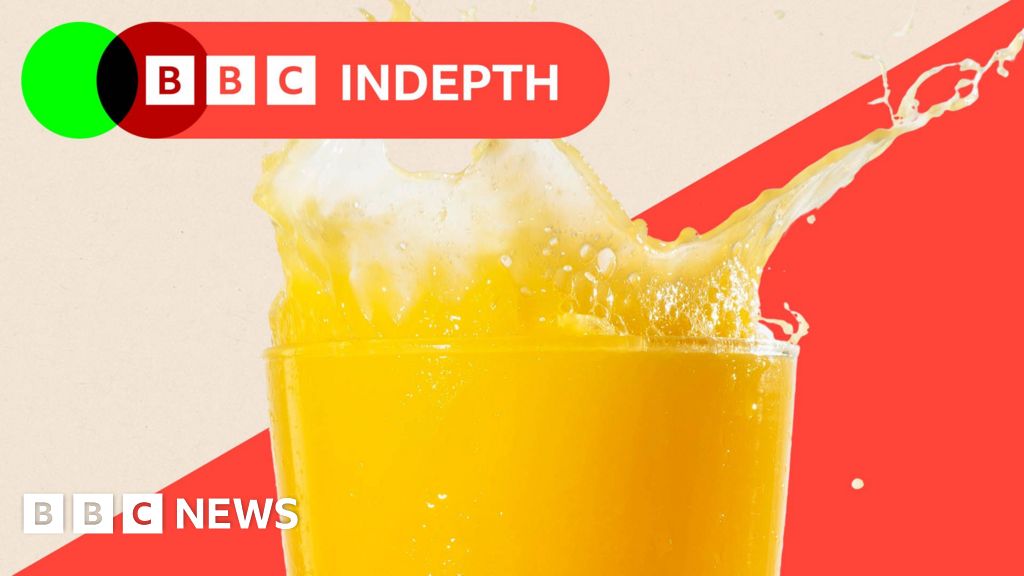The £5.30 orange juice that tells the story of why supermarket prices are sky high
60 minutes ago Share Save Faisal Islam Economics editor Share Save
BBC
There has been more than a bitter twang in the glasses at British breakfast tables. Only five years ago, a typical supermarket own-label carton of orange juice could be bought for 76p for 1 litre. It now costs £1.79. That's a rise of 134% since 2020, and it's up 29% just in the past year. In cafes and restaurants it's a similar story - with £3.50 to £4 now a standard price point for a glass of basic OJ. One colleague was outraged to be sent a bill for £9 for a glass of hangover-busting orange juice and lemonade at an unassuming little restaurant in Kent. Asked why so much, she was told that the orange juice - albeit freshly squeezed - accounted for £5.30 of the price. Yet as costs have surged, the taste is changing too, with certain manufacturers substituting oranges for mandarins to cut costs. The public is, if you like, being freshly squeezed.
There are all sorts of reasons for this: disease among crops, extreme weather, over-reliance on supply from a single nation, new rules for packaging and complexities around trade wars and Brexit. All of this is compounded by grocery price inflation which, after hitting 17.5% in 2023, came down (to around 5.7% in August) but is rising once again. New figures for overall inflation will be released later today. It is a perfect storm. Yet the problem is not isolated to orange juice - track the prices of all sorts of other groceries in supermarket aisles and you'll see a similar pattern. And so understanding what has happened to orange juice offers a glimpse into how our overall grocery bills suddenly seem so expensive. It all prompts the question: is this storm a passing one, or are prices set to remain stubbornly high - and
Continue Reading on BBC News
This preview shows approximately 15% of the article. Read the full story on the publisher's website to support quality journalism.
